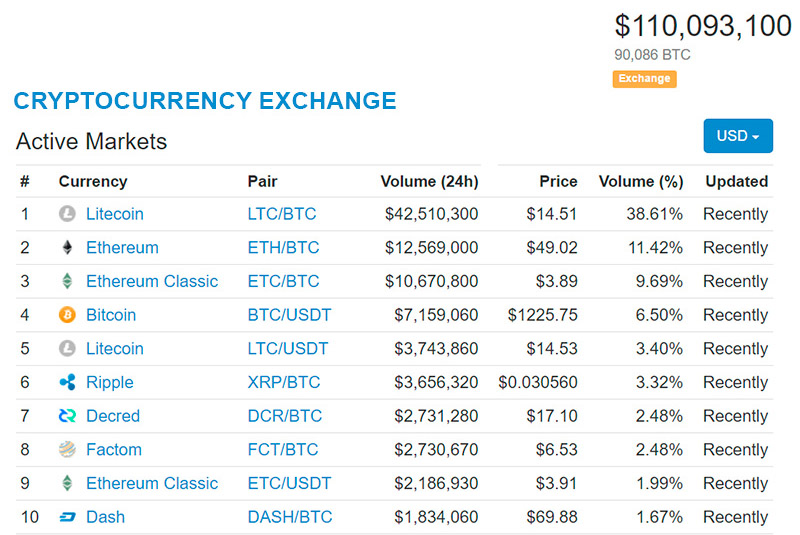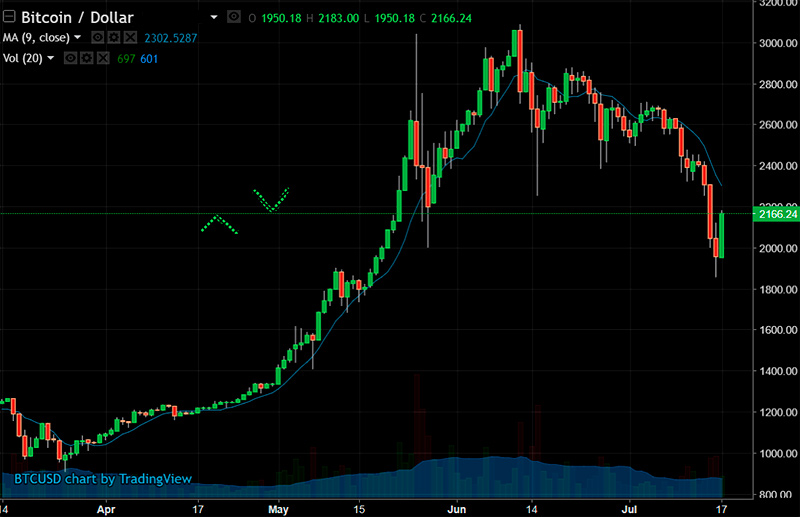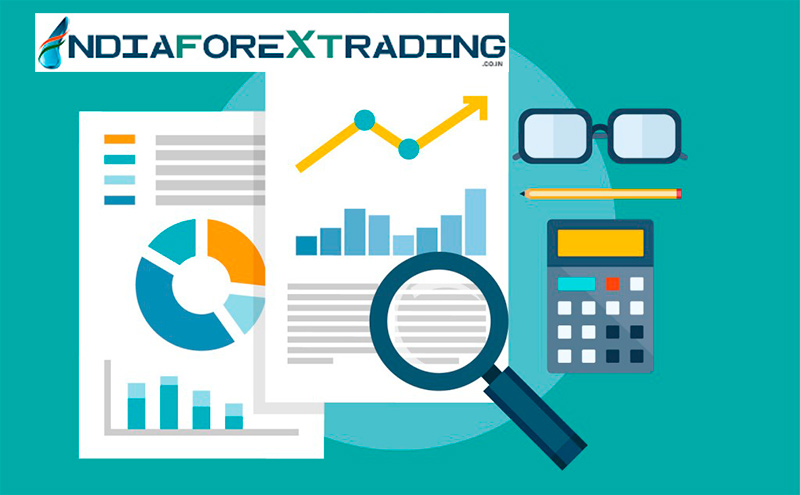Cryptocurrency Trading – Basics
 Online currency trading found a new dimension with the active participation of traders in the crypto-market. This highly-volatile market emerged to be one of the finest mediums to trade cryptocurrencies, giving investors an opportunity to earn their share of tax-free profits.
Online currency trading found a new dimension with the active participation of traders in the crypto-market. This highly-volatile market emerged to be one of the finest mediums to trade cryptocurrencies, giving investors an opportunity to earn their share of tax-free profits.
Interestingly, cryptocurrencies (electronic peer-to-peer technology) witnessed a wide leap from being academic concept to reality in 2009, with the launch of Bitcoin. Though this currency was able to attract a significant portion of investors during its inception, yet things took an exceptional turn when its value surged tenfold on April 2013 reaching an overall market capitalization of $2 billion dollars, later it soon saw a splurge of 50% and this led to the creation of many alternative currencies that are together called as altcoins.
What is Cryptocurrency Trading?
Trading cryptocurrencies is similar to forex trading, where you get to trade various altcoins or bitcoin, for either USD or other coins. Trading these coins is an incredible way to get into the market without having to mine or invest in the hyips or cloud mining of bitcoin. To begin cryptocurrency trading and earn profits, you need: cryptocurrency wallet and cryptocurrency exchange. The first step is to own a wallet with the respective currencies that you want to trade and then make your way towards the crypto-trading market with the help of an exchange.
At present, over 40 brokerage houses allow investors to trade cryptocurrencies and all of them feature Bitcoin, while only half of them support Litecoin and Ethereum and the rest offer other happening currencies such as Dash, Ripple and Zcash.
The Basic Terms and Tactics of Cryptocurrency Trading
There are certain basic terms that you need to be aware of, in order to trade cryptocurrencies competently. Some of these key terms are:
-
Cryptocurrency Exchange

The cryptocurrency exchange is the ultimate spot where the trade of digital coins takes place. They are known to be the market makers who take the bid and ask spreads as a form of commission for the services that they offer. Here, investors and traders get a platform to make profits from the various movements of the market, while the gains made are directly sent to their digital wallets. Besides that, you can seek help from established brokers who will allow you to trade various currencies on the exchange based on their current market value. As stated earlier, Bitcoin remains to be one of the most traded currencies and is followed by Ethereum.
-
Leverage

There are certain exchanges that let you make the most of “leverage trading”. In this trading, you get to trade the amount that you don’t own and take it as a form of loan. The normal ratio at which exchanges offer leverages is 1:10 and this means for every dollar you get the power of using about 10 dollars. This indeed opens a new horizon in the world of crypto-market trading with a possibility of higher profit at higher risk.
-
Spreads

A spread is denoted as the difference between ask and bid price stipulated by the broker. At present, this value can get as high as $10, raising the fee to over 0.24%. In addition, there are certain brokers that charge their spreads in minimums that can be as high as 5 Bitcoins, which means you can’t trade less than $20,000 worth the present market prices. In case of a leverage 10:1, you have to make a deposit of $20,000 so as to place your trade.
-
Smart Contracts

You must have heard it often that Bitcoin (BTC) is one of the best examples of successful smart contracts. But, what exactly are they? A smart contract in cryptographic language is a protocol that negotiates, verifies, enforces and facilities a contract. These contracts are commonly used for credible transactions without the involvement of third-parties. It is important to mention that these contracts tend to self-execute them on the basis of the original code embedded in them. Thus, making it a potential tool for trading cryptocurrencies as well.
-
Margin

Another prominent feature that can be seen in cryptocurrency trading is “margin trading”. With this, you get to use the funds of investors who act as peer-to-peer margin renders. Through this, you get to borrow either the selling/buying power, but you have to deposit some funds (which would be the margin) that would not be accessible to you unless you return the complete lending amount. If you own 430 USD and you want to buy about 2 BTC, whose price closes somewhere at 450 then you get to make 2 X 21 which is equal to $42. Then, the low-interest value has to be subtracted and the final profits, that are higher can be accurately measured and traded.
-
Technical Analysis (TA)

Like any other currency trading market, even the crypto-market is affected by certain fundamental and technical trends. However, performing technical analysis for cryptocurrencies is different from the rest, as these markets do not provide any sort of financial statements. Thus, the analysis of this market is based on a “well-defined methodology”, which again varies for each one. Unlike the conventional currencies that are influenced by economic conditions, cryptocurrencies behave quite technically with respect to their trendlines and support and resistance levels. Therefore, trading them remains to be a speculative task unless they become one of the most common mediums of exchange worldwide.
Apart from the hard-forks and technical drifts of blockchain, there are not many events that are going to leave their impact on the market. Probably, this is the reason why experts often denote Bitcoin to be the dream of technical analyst, as graphs and evaluation of historical data make their movement more clear than ever.
-
Fundamental Analysis (FA)

In case of fundamental analysis, you have to determine those factors that drive the market. Though at first, this might seem impossible, with time you’ll realize that there are various forces that influence the dynamics of the market significantly. For example, the value of a currency gets altered due to several reasons, such as introduction of a new currency, increase in the fees of the existing currency or lack of efficiency in the currency. When bitcoin was at its peak, the price took a drastic unexpected turn and that was the splurge of 50% this could have been sensed by three aspects and they were:
- The long transaction confirmation time taken by the bitcoin’s blockchain
- The risk of being traced was increased
- The transaction fees were higher than before
Basically, it is the traits of the currency that formulates its fundamental analysis. For understanding them, you have to be vigilant about every move that they make.
Remember: you have to take advantage of the available resources and technology for maximizing your chances of gaining profits. Never ever put an entire lot of coins into the trading market, typically when you are a beginner. Break the capital into small lots, so as to acquire multiple positions are varied levels of prices. Realize that the market operates in a continuous manner and demands optimal concentration, effort and time. Thus, do perform your research and stay up to date with real-time technical analysis. Know when to close a position and take the cash in, stay professional, unemotional and focused on the market.